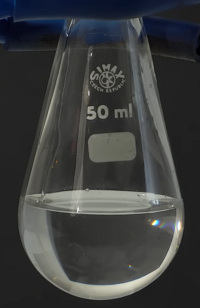
Photo from wikipedia
Abstract To elucidate the mechanism of nitrogen transformation during biomass combustion, the formation behavior of NO x precursors during biomass devolatilization was investigated using two types of pyrolysis reactors at… Click to show full abstract
Abstract To elucidate the mechanism of nitrogen transformation during biomass combustion, the formation behavior of NO x precursors during biomass devolatilization was investigated using two types of pyrolysis reactors at different heating rates (13 °C/s and 10 4 °C/s) with model compounds (i.e., mixtures of various amino acids and cellulose/lignin). It was found that 60–80% nitrogen existed as protein-N. Cellulose promoted the formation of a greater amount of N-containing compounds at higher heating rates but resulted in the conversion of nitrogen into tar with a smaller amount of N-containing compounds at lower heating rates. Lignin promoted the transformation of nitrogen into gaseous products at lower heating rates. Higher heating rates were found to disfavor the interaction between the amino acids and lignin. However, different amino acids had different effects on the nitrogen transformation in biomass. Glutamic acid resulted in the lowest nitrogen distribution in gas and the highest distribution in tar, phenylalanine caused the conversion of a large amount of nitrogen into gaseous products, while the resulting char captured the lowest amount of nitrogen. Glutamic acid and alanine promoted the formation of N-containing heterocyclic compounds, while copyrolysis with phenylalanine afforded N-containing compounds with NH 2 and CN groups.
Journal Title: Fuel
Year Published: 2017
Link to full text (if available)
Share on Social Media: Sign Up to like & get
recommendations!